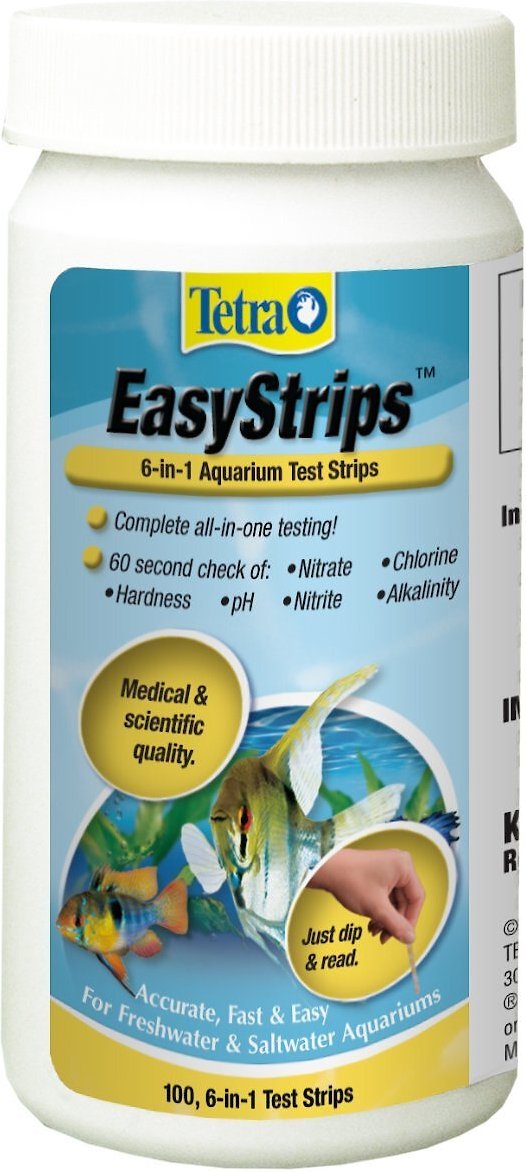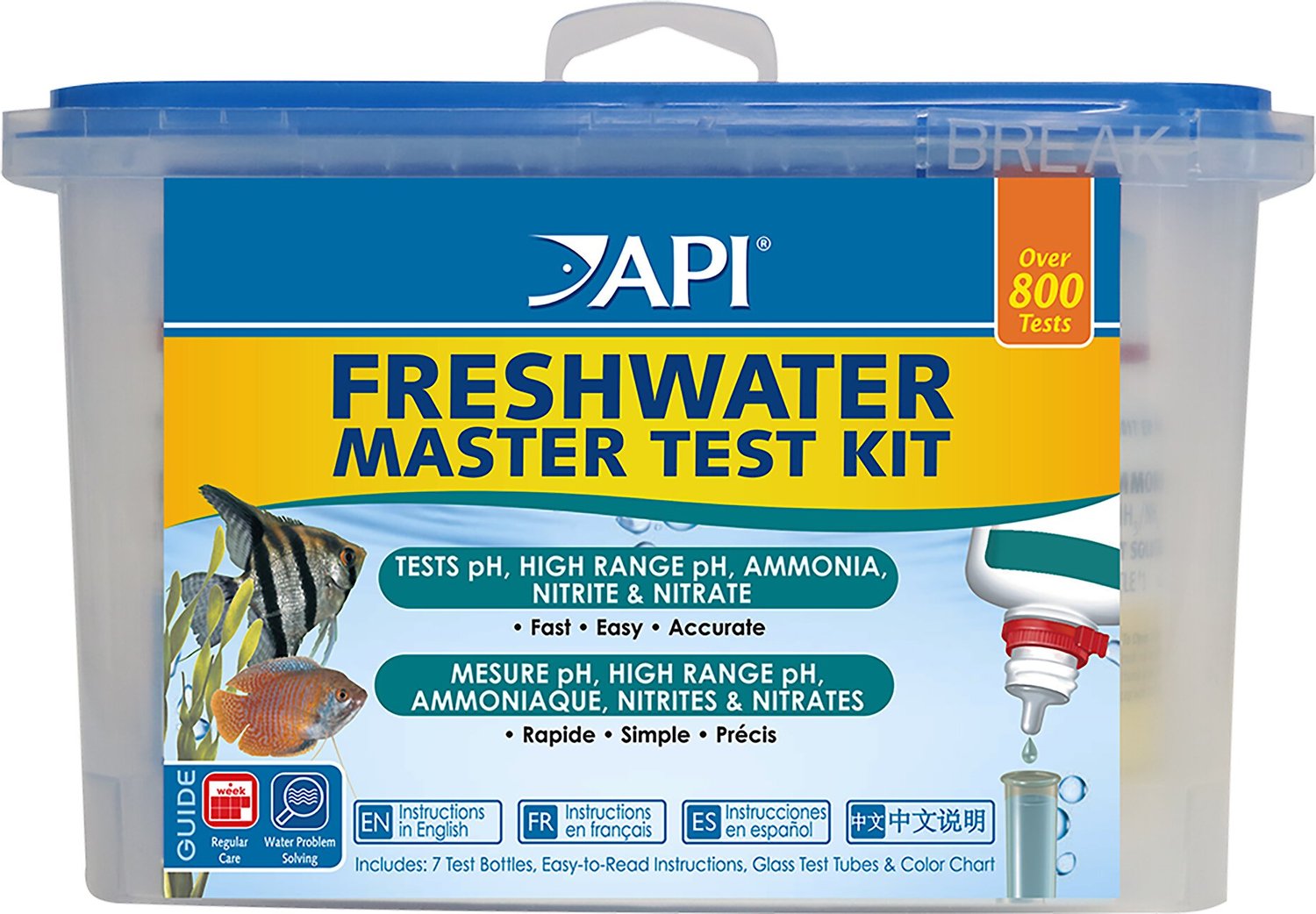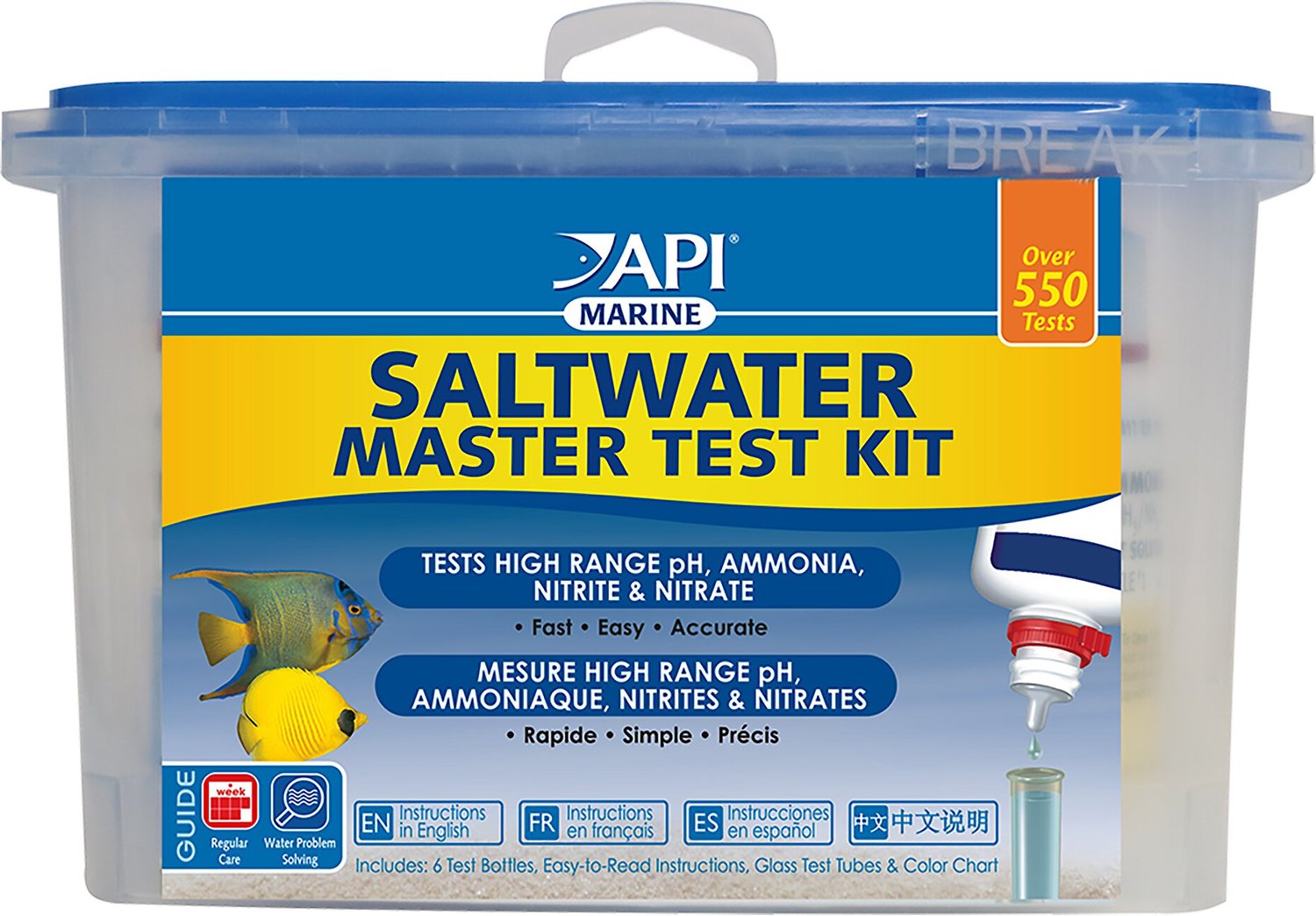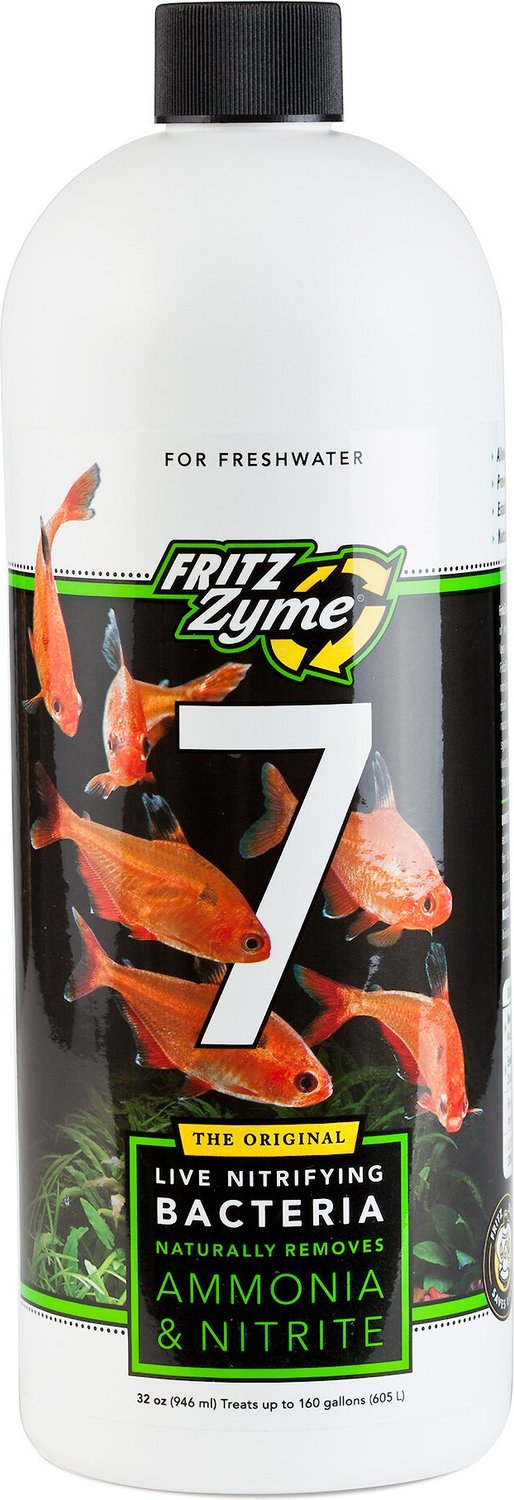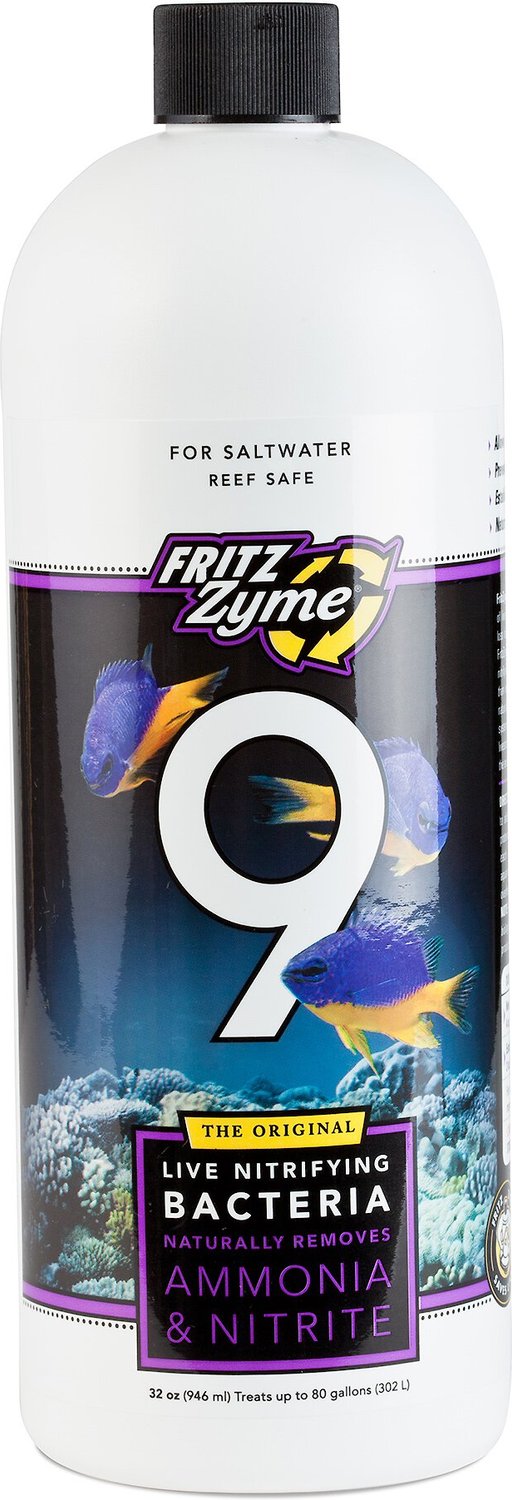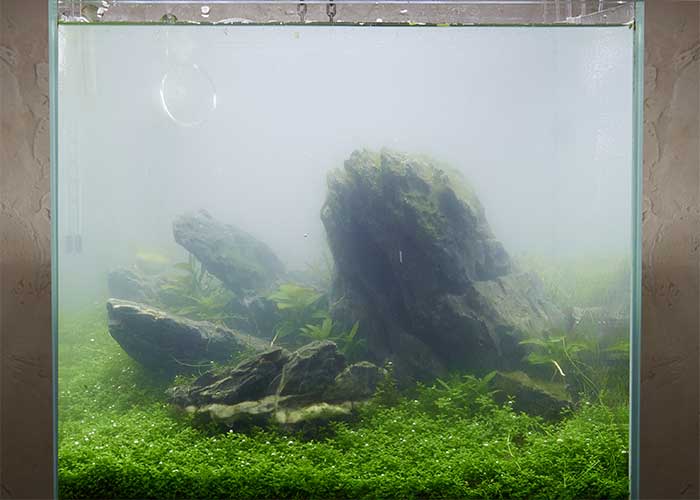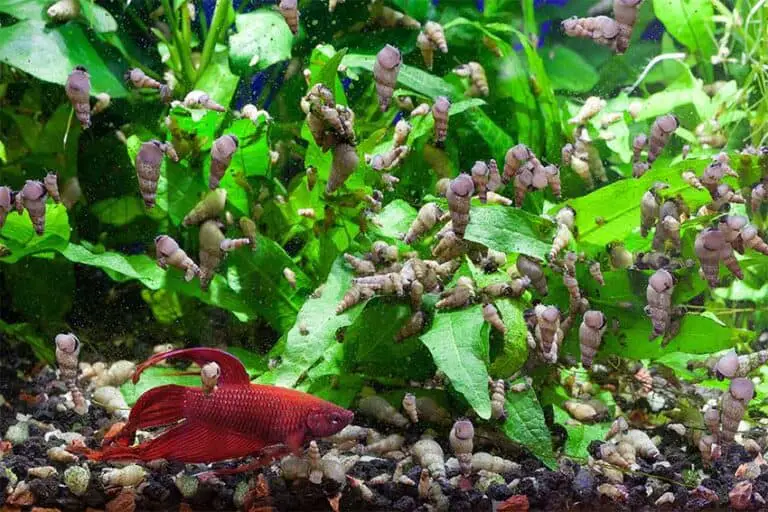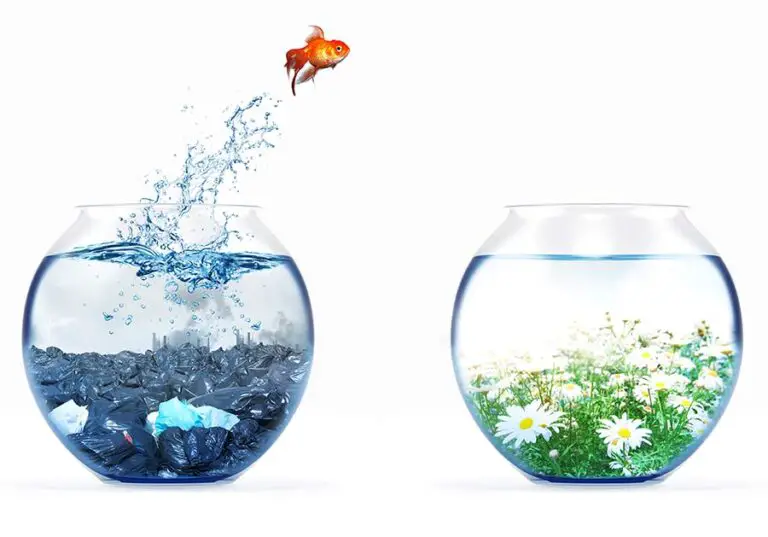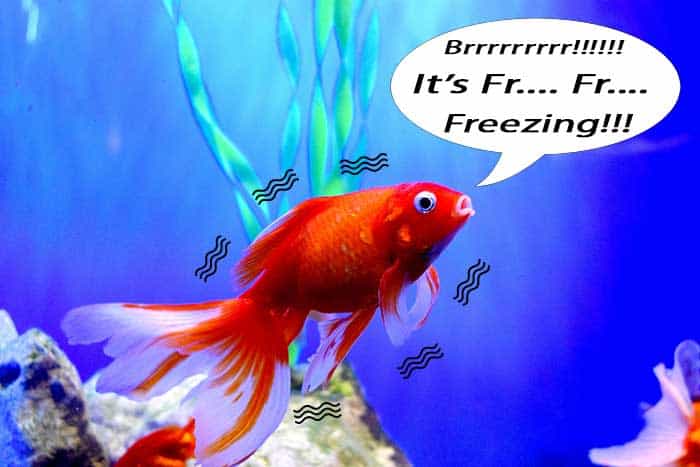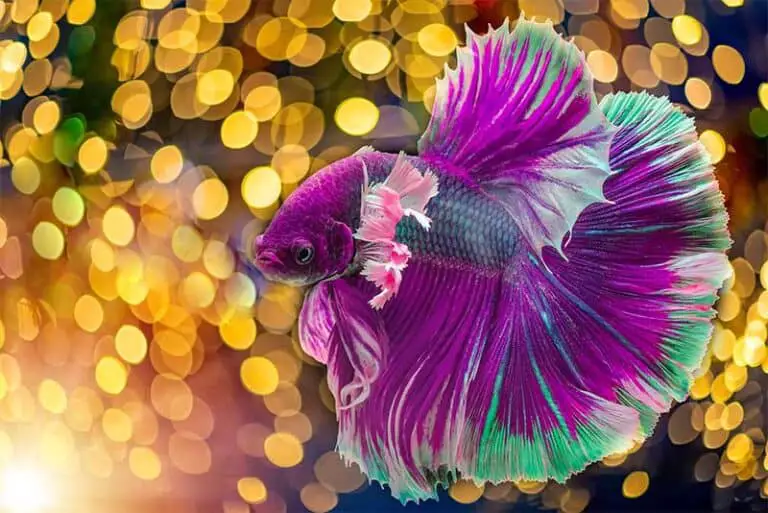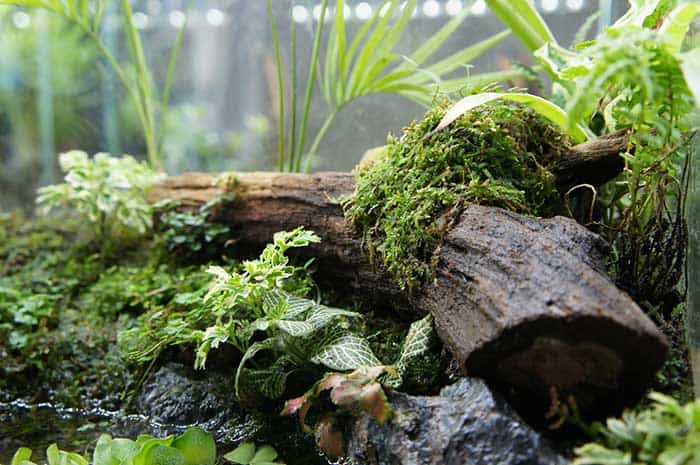How to cycle a fish tank (Step by Step)
Learning how to cycle a fish tank will undoubtedly be one of the most important things you can learn as an aquarist.
Cycling a freshwater fish tank is the process of establishing and maintaining a colony of beneficial bacteria in your aquarium that will help break down ammonia and nitrite into less harmful compounds. This process is called the nitrogen cycle and is essential for keeping your fish healthy and preventing the dreaded “new tank syndrome.”
The process of cycling a saltwater tank is very similar, as you will be encouraging the growth of bacteria for the nitrogen cycle to happen. The main difference in cycling a saltwater aquarium will be water parameters and salt content, which I will cover in a separate article.
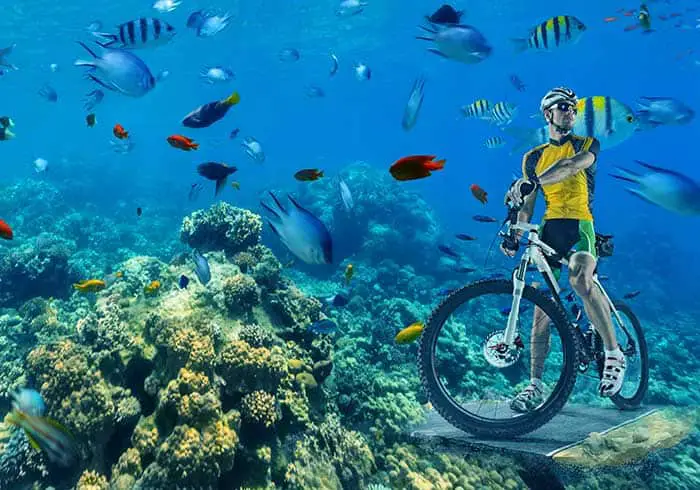
Below is a quick step-by-step guide to getting you going, and the rest of this article will explain in a little more detail what each step entails.
How To Cycle A New Fish Tank
- Set up your brand-new fish tank with a filter, substrate, heater, and any live plants you want. Live plants are beneficial to the overall biological cycle.
- Fill your tank with water and add your plants. You can add a few fish when your tank temperature is stable. Goldfish, Danios, Neon Tetras, and Platies are all excellent choices as they are pretty hardy tropical fish.
Ensure you treat tap water with a good water conditioner to remove any chlorine or heavy metals that can harm your fish. - Keep an eye on the water chemistry. Monitor ammonia, nitrite, and pH levels closely using a testing kit for the next few weeks. A pH of around 7 to 8 would be best for cycling as it creates the perfect environment for beneficial bacteria to grow. A pH of this value is slightly alkaline and creates a soft buffer to protect against acidity.
You can learn more about aquarium pH by reading: Fish Tank pH Levels. - When ammonia and nitrite levels have stabilized and remain consistent, you can start adding more fish.
- Keep checking your water parameters and ensure you carry out water changes as needed to keep those toxic ammonia levels under control.
That’s it! Cycling a fish tank is not difficult, but it does require some patience. By following the steps above, you’ll be well on your way to having a healthy and happy aquarium.
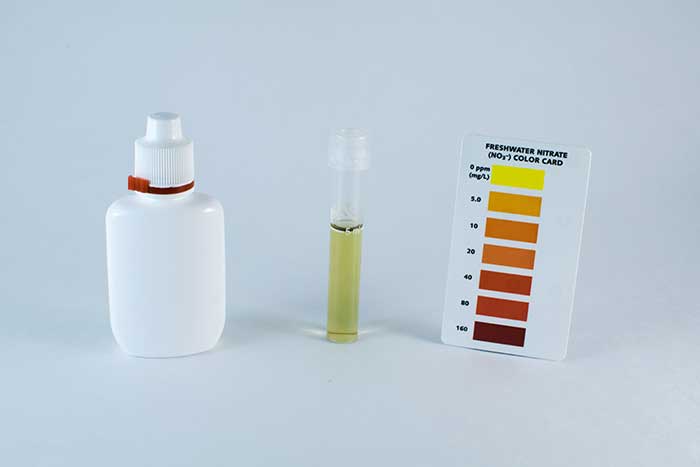
How To Do A Fishless Cycle
I have detailed above how to cycle a fish tank which includes the addition of a few fish while the tank is cycling.
This section covers a few extra tips on how to cycle a fish tank without fish. Fishless cycling is often more common, and it means that you can get your tank fully cycled without the need to add a bunch of hardy fish species that you may not want in your tank.
To do a fishless cycle, you can follow all steps at the top of this article, with the exception of adding fish. Cycling a fish tank without fish can take much longer than a regular cycle, sometimes as long as 4 to 6 weeks.
The 2 extra steps that I would recommend during a fishless cycle are:
1) Add some beneficial bacteria by using commercially available bottled bacteria, or if you already have an established tank, borrow some water, substrate, or a filter from the tank. Borrowing from an established tank will transfer some beneficial bacteria to the new tank.
2) Add some ammonia-causing substances such as fish food which produces ammonia as it begins to rot. Fish create biological waste naturally, so in the absence of fish, you need to do this manually. Ammonia is essential in small amounts to feed the beneficial bacteria and help them to grow.
How To Cycle A Tank With Fish Food
When you have fish in your tank, the ammonia and nitrates the fish produce will feed the beneficial bacteria and help them grow.
Without fish in your tank, you will need to provide these essential elements artificially for the bacteria to grow and cycle your tank.
Adding fish food is the most common way of cycling a tank without fish. As the food begins to rot, it will provide adequate ammonia levels to aid the cycling process.
How Do You Cycle A Fish Tank Naturally
Cycling a fish tank naturally means that you will not add any chemicals to the water instead, you will let the tank sit.
Levels of chlorine and heavy metals will naturally reduce quickly, and low levels of beneficial bacteria will begin to grow.
You will need to provide a food source for the bacteria, or they won’t survive long enough, and the whole process will stall.
If you have live plants in your tank, they will begin to die until enough nitrates are present. As the plants die, rotting leaves will produce ammonia which will feed the bacteria and eventually provide the nitrates necessary to feed the plants.
A complete cycle has taken place at this point, and over time, the process will become constant and more robust.
What Does Cycling A Fish Tank Mean
At the beginning of this article, I jumped straight into the cycling process to get you moving as quickly as possible, but you will still need to understand what you are doing and why.
So what does cycling a fish tank mean?
Cycling a fish tank means creating a healthy and stable environment for your fish to live in. The cycling process is the means of establishing a colony of beneficial bacteria in your tank, which will break down ammonia and nitrites into less harmful substances.
Fish require ammonia and nitrite-free environments to grow, and without a complete cycle, your fish are susceptible to toxic ammonia and nitrite poisoning, which can be deadly.
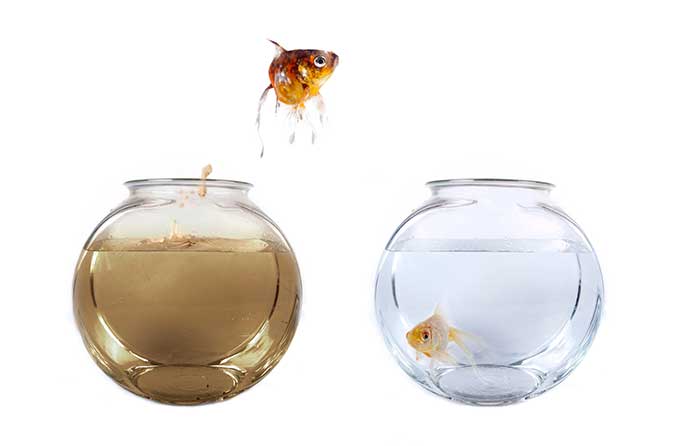
It is safest to only add fish to a tank at the end of the cycling process, and you have confirmed that ammonia and nitrite are at safe levels and stable.
What is Ammonia
Fish produce ammonia as part of their natural waste production. When too much ammonia builds up in the water, it becomes toxic to fish and can cause death.
Ammonia is also produced when any organic matter breaks down in the tank, including uneaten food, plant debris, and fish waste.
What are Nitrites and Nitrates
Nitrite is produced as a by-product of nitrifying bacteria. These beneficial bacteria convert ammonia into nitrites and then into nitrates through the nitrification process.
Like ammonia, nitrite is toxic to fish at high levels and can cause death. The beneficial bacteria that convert nitrites into nitrates are essential for the cycling of your tank.
Nitrates are a great source of food for aquarium plants. Nitrates are not as harmful to fish as ammonia or nitrite but should still be kept at low levels. Live plants will help keep nitrate levels down. Water changes are another way to remove excess nitrates.
What Is The Nitrogen Lifecycle
The process I described above is better known as the nitrogen lifecycle. Ammonia provides food for beneficial bacteria such as “Nitrosomonas.” This nitrifying bacteria will feed on the ammonia and create the by-product “nitrite.”
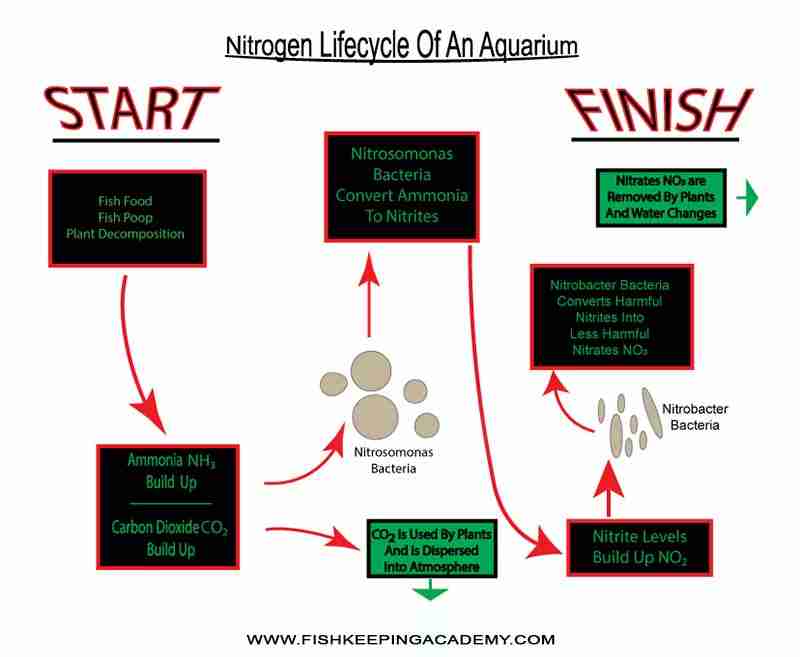
Nitrites are also a food source, essential to other types of bacteria such as “Nitrobacter,” which again feed and convert the nitrites into nitrates.
Nitrates provide a food source for plants. The final stage of the nitrogen lifecycle is completed when rotting plant leaves, fish waste, and decaying food matter will all produce ammonia, and the cycle begins again.
The nitrogen cycle is continual and will take place as long as you have a healthy aquarium.
Providing your tank has a high level of healthy bacteria, harmful, toxic chemicals will be converted into less harmful chemicals.
I found the video below, which is another useful guide to understanding the nitrogen cycle.
How Much Ammonia Is Safe For Fish
Ammonia is very toxic to fish, causing ammonia burns and general skin irritation, which may lead to infection. High levels of ammonia can also reduce the amount of dissolved oxygen in the water, which can cause your fish to suffocate.
For your fish to be safe, ammonia should be at 0 ppm (parts per million).
Ammonia can also cause green fish tank water from algae blooms and cloudy fish tank water from bacterial blooms, especially after performing a water change and disturbing nutrients buried in the substrate.
What Should Nitrite Levels Be In Freshwater Tank
I have explained the nitrogen cycle and how it works in a fish tank, and I have explained that ammonia levels should be 0 ppm because it is so toxic to fish, but what should nitrite levels be in a freshwater tank?
Nitrite levels should be between 0 and 0.5mg/L (ppm). You will likely see negative impacts on your fish health at any higher than this.
Nitrates are less toxic and essential for healthy plants, so these levels can be higher. If nitrate levels become too high, they can also become harmful.
You should be okay with nitrate levels between 0-40 ppm, and anything above 80 ppm should be considered toxic.
How To Check Ammonia Levels In Fish Tank
Ammonia levels should be checked regularly, especially in a newly cycled tank, and they can be tested using a water test kit.
There are several test kits available, and they can vary in price. A good commercial test kit will measure all of the relevant water parameters in one use. There are 2 that I would recommend and that I use myself. The API master test kit and Tetra Easystrips are simple to use and give accurate results.
I have left (affiliate) links to both products below.
Tetra Easystrips 6 In 1 Test Strips x 100
Tetra easy strips are an easy-to-use freshwater and saltwater test kit that measures levels of chlorine, nitrate, nitrite, general hardness, alkalinity, and pH.
Just dip the test strip in your aquarium and compare it to an included color chart.
API Freshwater Master Test Kit
Quickly measure and modify the six aquarium levels most important to your freshwater fish’s health with the API Freshwater Aquarium Master Test Kit.
It comes with four test tubes, a holding tray, a test tube rack, and a computer-calibrated, laminated color card. Just fill the test tubes, add the test drops and compare the results to the color card.
API Saltwater Master Test Kit
Fish waste, uneaten food, plant refuse, and other organic compounds can create harmful levels of ammonia, nitrite, and nitrate and can also cause drastic fluctuations in pH, creating unhealthy conditions for your saltwater fish.
This API test kit is designed to accurately measure these four saltwater parameters that are key to keeping your aquarium healthy.
The kit includes six bottles of liquid test reagent, four glass test tubes with snap-tight caps, a holding tray, and a step-by-step instruction booklet with information on how to correct unsafe water conditions.
How To Check Ammonia Levels In Fish Tank Without Kit
Testing ammonia levels without a test kit will be less accurate, but it is possible if you know what you are looking for.
The easiest way to test ammonia levels without a kit is to look at the fish. If the fish are swimming erratically at the top of the tank, ammonia levels may be high.
Another way to test ammonia levels without a kit is to look at the water. If the water is cloudy and has a strong ammonia smell, then levels are high.
Because fish should not be exposed to ammonia, I wouldn’t recommend testing without a kit as it can lead to the needless suffering of your fish.
Do You Have To Cycle A Fish Tank
The nitrogen lifecycle will occur naturally over time whether you cycle your tank or not, so do you have to cycle a fish tank?
You must cycle a fish tank to keep your fish healthy. Fish cannot tolerate ammonia and nitrites, and dissolved oxygen levels within the tank will suffer from these chemicals.
Disease-causing bacteria and parasites will also thrive in a tank that has a high level of ammonia and nitrites present.
How Long Does It Take To Cycle A Fish Tank
It can take between 1 and 3 weeks to cycle a fish tank, dependent on whether you have added fish earlier or later in the cycling process and whether you have added your own sources of beneficial bacteria and sources of ammonia.
Including a few hardy fish earlier on will speed up the process because fish will naturally create ammonia as they feed.
How Long Does It Take For A Tank To Cycle Without Fish
A completely fishless cycle can take 4 to 6 weeks to complete naturally, however, you can speed the process up by adding your own sources of nitrifying bacteria and ammonia.
By manually adding beneficial bacteria and ammonia, the process can complete much quicker, and you can sometimes cycle a fish tank in a week by doing this.
How To Cycle A Fish Tank Fast
Tank cycling does take time, but it is essential to build those all-important foundations for a healthy tank to sustain itself with minimal input.
If you are short on time, or if you just want to get your tank up and running as quickly as possible, I have written this article: How To Cycle A Fish Tank In 24 Hours (Emergency Cycling).
While it is a good read and has plenty of tips, I would only recommend a quick cycle in emergencies to avoid any loss of fish.
The tank cycling process requires that you check water parameters regularly until they become stable. After an instant cycle, ammonia levels will be inconsistent, and you will need to carry out regular water changes to keep things steady.
How To Get Beneficial Bacteria In Aquarium
I have frequently talked about adding your own source of bacteria to your aquarium, which will speed up the cycling process.
I most often use the commercial products listed below.
API Quick Start Nitrifying Bacteria
API Quick Start Freshwater And Saltwater Aquarium Nitrifying Bacteria allow for the immediate addition of fish to a new tank as it starts the natural aquarium cycle with beneficial bacteria.
Nitrifying bacteria convert toxic ammonia into harmless nitrate. It also prevents fish loss in both freshwater and saltwater aquariums.
FRITZ Zyme 7 Freshwater Nitrifying Bacteria
Fritz Zyme 7 Freshwater Nitrifying Bacteria for Aquariums contains specific strains of natural bacteria that go to work removing toxic ammonia and nitrite immediately in freshwater tanks, with no wait time.
The bacteria in this formula quickly seed your biofilters so you can use them on new tanks and established tanks.
FRITZ Zyme 9 Saltwater Nitrifying Bacteria
Fritz Zyme 9 Saltwater Nitrifying Bacteria contains specific strains of natural bacteria that go to work removing toxic ammonia and nitrite immediately in saltwater tanks, with no wait time.
The bacteria in this formula quickly seed your biofilters so you can use them on new tanks and established tanks, especially after cleaning or medicating, water changes, or when adding new fish.
I have also mentioned that you can transfer beneficial bacteria from an already-established tank into your new tank. The best ways of transferring bacteria are:
- Use substrate – Substrates such as gravel and sand will hold a good level of beneficial bacteria.
- Fish Tank Filters – Bacteria will thrive within the filter, so beneficial bacteria will quickly spread through the water if you use an existing filtration system that has already been “seasoned.”
- Filter media – Borrowing some sponges or other filter media from an established tank and placing them in your own filter will have the same effect as using the filter itself.
- Transfer some water from an established tank – An established tank should have an abundance of beneficial bacteria, so by transferring some of this water into your new tank, you will also share some of the bacteria.
CAUTION!
Remember that when transferring bacteria between tanks, you may also transfer some harmful bacteria and even some harmful organisms that can cause illness and disease, so caution is advised.
How Long Does It Take For Good Bacteria To Grow In A Fish Tank
Good bacteria can grow in a tank in as little as 2 days and reach a peak level in about 2 weeks.
The time it takes for bacteria to grow will depend on the method of cycling you have chosen.
How To Know When A Tank Is Cycled
The only way to know when a tank is cycled is by testing the chemical makeup of the water using a test kit.
When ammonia and nitrite levels are reading as low, and there is a good presence of nitrates, the cycling process is working. Test regularly for the first few weeks, and if all levels remain stable, you can presume that the tank is correctly cycled.
How Long To Cycle A Tank Before Adding Fish
It is quite safe to add fish early in the cycling process, usually after a few days to a week, and it will help the aquarium cycle quicker. Fish produce waste naturally, which will convert to ammonia and increase the levels of beneficial bacteria.
The main concern for fish is that ammonia and nitrite levels remain low, so you may need regular water changes to keep your fish comfortable.
If you add fish during a cycling phase, you should only add a small number of fish and choose a hardy species.
Conclusion
Although this article is quite long, I have ensured it covers all aspects of cycling a fish tank, from fish-in cycling, emergency cycling, fishless cycling, and natural cycling.
I have explained why you must cycle a fish tank and the most common problems you may run into.
Finally, I have provided a step-by-step guide for you to follow, and I have included some tips to speed up the cycling process.
Cycling an aquarium is a reasonably straightforward process, and with a bit of patience, you can have a healthy tank up and running in no time.
The benefits of a correctly cycled fish tank are huge, as it will need very little upkeep except for routine water changes, and the likelihood of disease and infections will be much lower.
It’s also easier to get crystal clear fish tank water when your tank is correctly cycled, otherwise you may get a regular milky haze.


